In some of the recent Mary Lou McDonald television news interviews from her home, the image of Countess Markievicz features prominently in the background.
The Rebel Countess, Constance Gore-Booth, took part in the 1916 Easter Rising and her death sentence was commuted on the grounds of her sex.
As a Sinn Féin representative in the 1918 General Election she became the first woman elected to the British House of Commons.
A decade after the Rising she parted company with Sinn Féin to join Fianna Fáil and chaired its inaugural meeting. The following year, 1927, she was returned to the 5th Dáil but died before she could take her seat.
Among those at her bedside was the once leading Sinn Féiner, but by then the Fianna Fáil leader, Eamon De Valera. He gave the graveside oration at her funeral in Glasnevin Cemetery.
Mary Lou McDonald's political career to date has taken her in the opposite direction to the path followed by Countess Markievicz.
A May Day baby, born in 1969, she once was a member of Fianna Fáil but she left the party because it wasn't the right fit for her. Instead, she joined Sinn Féin.
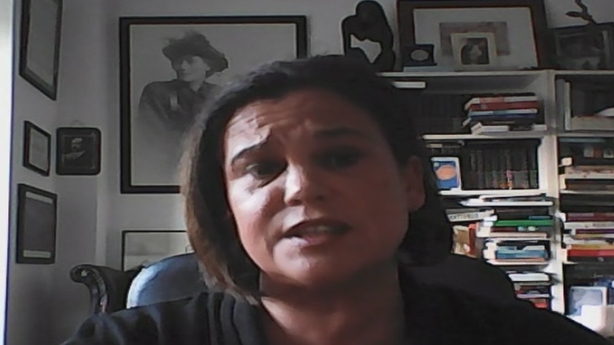
She surprised even herself by the scale of Sinn Féin's success under her leadership in the February 2020 General Election, winning 37 seats and 24.5% of the popular vote, the highest share.
Almost three months on, the two staunchest political rivals since the foundation of the state, Fianna Fáil and Fine Gael, are on course to set their differences aside and perform the range of contortions required to form a government.
One of their most significant bonding factors - keep out the Shinners at all costs.
North of the border unionists watch on with interest.
Never mind the 1960s Taylor/Burton movie, 'Who's Afraid of Virginia Woolf?'
A more pertinent question these days is Who Is Afraid of Mary Lou McDonald?
And not just who, but why?
Sinn Féin's widening appeal
In the early hours of Saturday, 4 April, 2020, a gang stole two cash machines from banks in Dundalk's main thoroughfare and broke for the border with gardaí in pursuit.
Local Sinn Féin TD Ruairí Ó Murchú was available for interview as the investigation got under way. He roundly condemned those responsible.
After we put the RTÉ camera gear away, Mr Ó Murchú mentioned how he had some family roots in Sligo. It quickly transpired that his grandfather was my former neighbour, the late Joe Wilson.
In January 1986 I interviewed the said Garda Chief Superintendant, Joe Wilson after 140 weapons had been found at two sites in Sligo and at a third in Roscommon.
It was part of the supply line from Libya that was eventually rumbled the following year when the French authorities intercepted a vessel named Eksund off the coast of Brittany, en route to the IRA with more weapons from Tripoli.
What about the evolving rainbow nature of Sinn Féin?
As well as being run by a former Fianna Fáil member, and including gunsmoke-free intellectual heavyweights like Eoin Ó Broin and Pearse Doherty, the party’s replacement as Louth TD for the most famous Sinn Féiner of modern times, Gerry Adams, is the grandson of a deceased Garda Chief Superintendent, who spent a lot of his time hunting down Provos in the border counties.
Fianna Fáil’s back stories
Michael Heney’s new book, all 448 pages of it, 'History of the Arms Crisis of 1970', gives a perspective on why there is still very active poison in the relationship between Mary Lou McDonald’s current and former party colleagues.
In his typical painstaking way, Heney takes us back to Jack Lynch's time as taoiseach when two of his Fianna Fáil colleagues, cabinet members Charles Haughey and Neil Blaney, together with an Army Officer, Captain James Kelly, were charged with attempting to provide guns for the Provisional IRA.
The background to the controversy was how Fianna Fáil was responding to the plight of nationalists as The Troubles began to erupt north of the border.
Nobody was found guilty by the courts but the saga created angst and division within Fianna Fáil. Blaney departed to form his own independent organisation and stayed outside the fold up to his death in 1995.
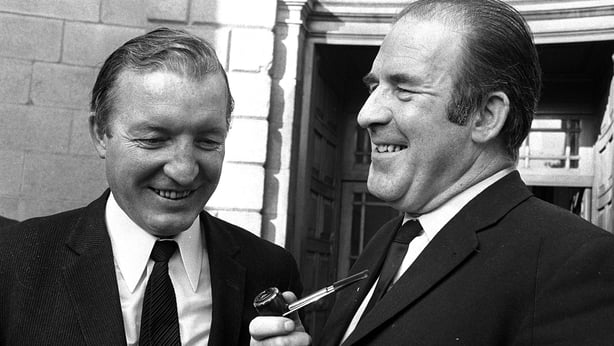
Haughey headed off on a journey that would eventually see him settle some internal party scores and return as an always-controversial leader.
Captain Kelly, who maintained he was acting under orders and carrying out his duties, died in 2003, without the full State apology he had sought.
The sense of grievance and the belief that he had been treated unfairly stayed with him for the rest of his life. Michael Heney dedicates his book to Captain Kelly and his wife, Sheila.
Heney’s book is a reminder of how a version of the frictions that led to splits in Sinn Féin and the foundation of Fianna Fáil in the 1920s surfaced again in the late 1960s and early 1970s.
His central thesis is that from the Fianna Fáil top down, the full truth was not told at the time of the Arms Crisis.
Like Jack Lynch, the taoiseach during the Arms Crisis controversy, the current Fianna Fáil leader, Micheál Martin, comes from Cork.
He served as Minister for Foreign Affairs from June 2008 to January 2011.
In that role he had a significant input to the negotiations that produced the missing piece of Northern Ireland’s power-sharing jigsaw, the transfer of responsibility for justice and policing matters from Westminster to Stormont in 2010.
Last year, on his watch as leader, Fianna Fáil formerly entered its liaison with the SDLP. It further cements Fianna Fáil in the space where Martin is comfortable - unite Ireland by exclusively peaceful, democratic means.
But for all Micheál Martin's wisdom, experience and faith in incrementalism, he is the latest inheritor of a still-boiling, bitter family row.
Fianna Fáil and Sinn Féin both claim a past that goes to the GPO in 1916 and beyond. Reconciliation between them is likely to remain the last unreachable political compromise in politics south of the border.
Fine Gael’s deep-rooted hostility towards Sinn Féin
Charlie Flanagan has travelled north many times in the past seven years as Minister for Foreign Affairs (July 2014 to June 2017) and more recently as Minister for Justice (June 2017 - present).
Many times, particularly when Brexit was bubbling in the background, the DUP were hostile to his overtures and were keen to exercise a political version of social distancing.
In his efforts to find common ground with Arlene Foster, I never once heard him mention 'Garryhinch'.
He was 19 in October 1976 when gardaí received an anonymous telephone tip-off that IRA members were at a farmhouse in Garryhinch, near Portarlington in Co Laois, preparing a bomb for use against the local TD, Oliver J Flanagan - Charlie Flanagan's father.
Five gardaí went to the vacant farm where a booby trap device exploded, killing one of them and seriously injuring the other four.
Garda Michael Clerkin, a native of Co Monaghan, died in the blast. Detective Tom Peters lost his sight and lived with his blindness until his death last year.
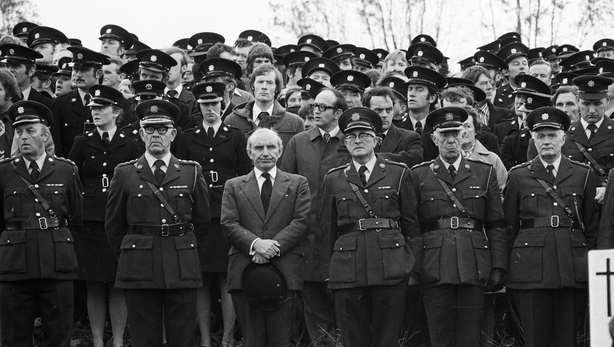
Two years before that, in 1974, a future Fine Gael leader and taoiseach, John Bruton, was one of those sharing a Dáil office with Senator Billy Fox.
On 11 March, the 35-year-old senator set off to visit his girlfriend, Marjorie Coulson, a Protestant, in a rural area of Monaghan near the border.
An IRA gang was raiding the Coulson house at the time, purportedly searching for guns. The arrival of Billy Fox created panic among some of the raiders and in the chaos Billy Fox was shot and mortally wounded.
He was the first and only member of the Oireachtas killed during The Troubles. What happened to him, followed by the Garryhinch ambush two years later, cut deep wounds into Fine Gael psyche.
That very personal sense of hurt is rarely spoken about in explicit terms.
But it exists in Fine Gael DNA and it goes some way to explaining why for some senior figures of the party, coalition arrangements involving Sinn Féin would be a step too far.
It was more recent and is treated differently to the inter-factional killing that took place in the Civil War.
The Moral Maze
'Maze', the story of the 1983 IRA breakout from what was supposed to be the most secure prison in Europe, was the RTÉ May Bank Holiday movie on Saturday night.
From 1971 until 1994, it was illegal to broadcast interviews with anyone speaking on behalf of what were considered subversive organisations, the IRA included.
As the opening and closing credits of 'Maze' made clear, it was made with financial support from, among others, the Broadcasting Authority of Ireland and RTÉ.
The 93-minute film is an attempt to provide the background to the IRA’s actions as well as information about how they succeeded in getting 38 prisoners out of the jail.
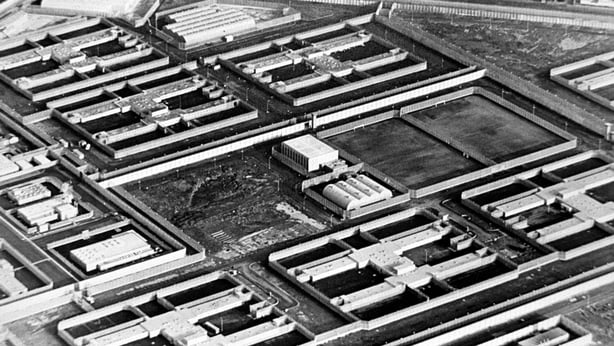
'Maze' attempts to give a sense of life inside H Blocks and the interactions between inmates and prison staff. It doesn't make judgements and leaves the viewer space.
Loyalist organisations are unlikely to be happy with how their contingent in the jail is portrayed.
Characters who feature include still prominent republicans, Gerry Kelly, Bobby Storey and Brendan McFarlane, as well as Larry Marley, who was shot dead by loyalists in north Belfast soon after he was released from prison in 1987.
It is an example of how we have moved on from some elements of our past that 26 years after Section 31 was dropped, a film about the IRA Maze breakout, part-funded by the State, is screened by RTÉ.
Unionist discomfort
Unionists, ever vigilant, ever suspicious, observe the different political time zones, north and south.
They frequently point out how successive Irish governments have insisted on Sinn Féin being included in power sharing at Stormont, in keeping with the Good Friday Agreement, yet Fianna Fáil and Fine Gael refuse to let similar arrangements apply in Dáil Éireann.
The difference in political standards and structures north and south of a porous border on a small island is back now on centre stage with an added ironic twist.
Northern Ireland’s two main unionist parties, the DUP and the UUP, are under significant pressure to sign up to an island-wide health strategy to combat the coronavirus pandemic at a time when political lockout, not lockdown, is near the completion stage in Dáil Eireann.
The health issue is such difficult territory for the unionists and to date they are struggling with it.
The performance of the UK government has been utterly chaotic.
A member of the world’s group of seven most powerful nations, the G7, it has been unable to acquire or manufacture and then distribute four or five Personal Protective Equipment products in sufficient volume to protect frontline workers.
Tesco can do it, all day, every day, with groceries. This is the same UK that once sent its armed forces to the other side of the world to retake an almost unoccupied island off the coast of Argentina.
The UK's virus-related death statistics have been under-reported. But information provided in recent days indicates that the UK are on course to have the highest virus-related fatalities in Europe.
Westminster provides the annual subvention that keeps Northern Ireland afloat, health funding included. Unionists consider it the mother parliament and head office.
Throughout the pandemic crisis, the consistent line of Arlene Foster, her Health Minister, Ulster Unionist, Robin Swann and their team of medical and scientific advisors has been to place their trust in strategy and policy emanating from London.
Even within the confines of Northern Ireland rather than island of Ireland thinking, the Stormont Executive could be doing more.
Dr Gabriel Scally was born and reared in Belfast and studied medicine at Queen’s University. A public health expert, he once had responsibility for the vast South West of England region.
He led the scoping inquiry into the Republic of Ireland's CervicalCheck screening programme.
Dr Scally has a well-earned reputation for telling the truth as he sees it. He doesn't pull his punches.
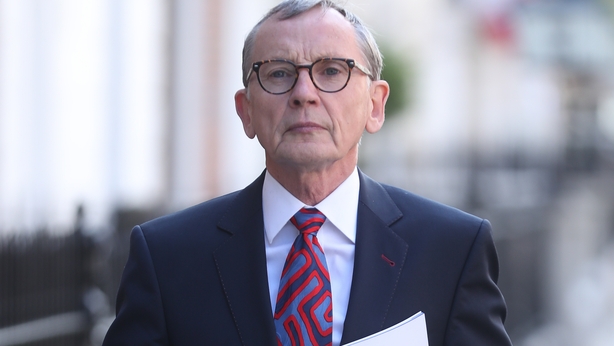
Martin McKee is another Northern Ireland-born medic who studied at Queen's University. He is currently professor of European Public Health and the London School of Hygiene and Tropical Medicine.
He was editor of the European Journal of Public Health for 15 years.
Professor Patrick Mallon from St Vincent's Hospital in Dublin, a specialist in infectious diseases, is one the experts whose views are regularly featuring in debate and analysis south of the border.
He, too, is a graduate of Queen's University, Belfast.
Monaghan-born Professor Sam McConkey from the Department of International Health and Tropical Medicine at Dublin’s RCSI once chaired the cross-border implementation board for sexual health services in Ireland.
He recently wrote: "If we are going to combat coronavirus on the island of Ireland, we need to forget about the border."
Heavyweights like Scally, McKee, Mallon and McConkey have a very personal as well as a professional interest in how Ireland, north and south, fares in the pandemic battle as it shapes up to deal with the potentially more difficult stage - creating a path to the new normal.
Northern Ireland’s power-sharing Executive, unionists included, and its home-based team of medical and scientific advisors, would be wise to take account of expert knowledge and advice coming from beyond their own limited circle.
Unintended consequences
The lockout of Sinn Féin from the next coalition in Dáil Éireann seems a done deal. Fine Gael and Fianna Fáil are focused on achieving critical mass by getting the Green Party to join their coalition.
Eamon Ryan, the Green Party leader, could even be offered a one-year run as taoiseach during the five-year term of the government.
Some of the 12 seats the Greens captured were helped by Sinn Féin transfers in constituencies where it hadn't run sufficient candidates.
Mary Lou McDonald and Sinn Féin, with three times the number of Green Party TDs, are about to be left on the political sidelines. Beached.
History will decide the consequences of that Fine Gael and Fianna Fáil strategy.
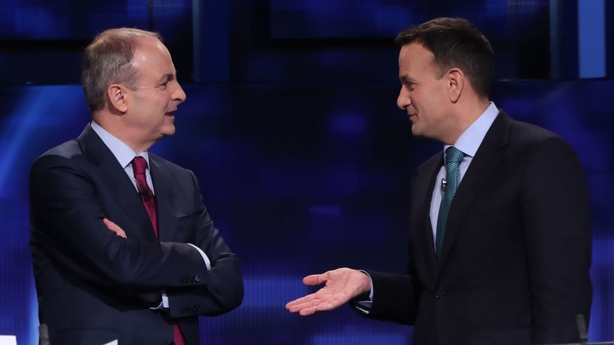
North of the border, where Sinn Féin is part of a government, unionists rather than Sinn Féin may be the ones who will quicken or slow down the pace towards a united Ireland.
Many Northern Ireland citizens, not just nationalists, compared the different approaches to the coronavirus south of the border and across the Irish Sea and made up their minds.
The Stormont five-party Executive is this week trying to decide its strategy for emerging from the pandemic emergency. From information published last Friday, it knows what is planned south of the border. Next Sunday, the British government is expected to publish its blueprint.
Will the Northern Ireland strategy take account of the island realities and what principles will unionists seek to promote in the plan? The decisions and the reasons behind them will be watched closely.
While the pandemic saga continues, Brexit is about to raise its head again and the British government insists it is a case of full steam ahead.
Unionists have an increasing number of reasons to wonder if Boris Johnson really is leading them securely to the sunny uplands.
Or, inadvertently, towards a united Ireland.






